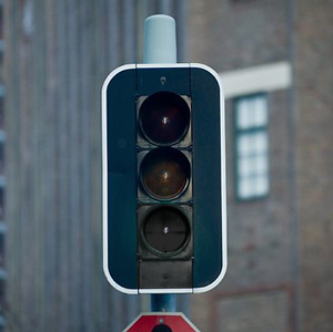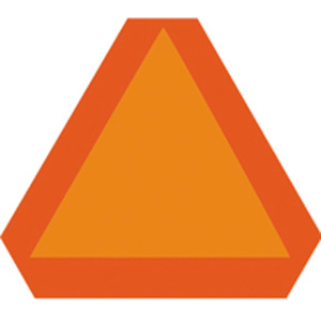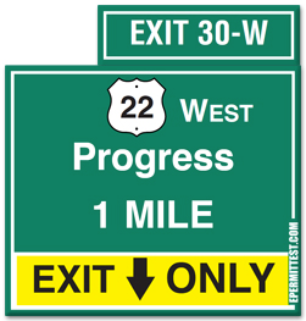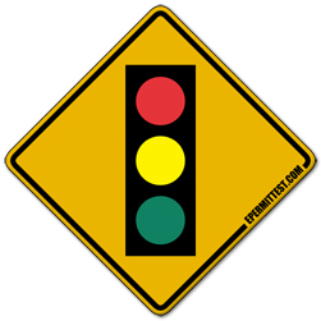DKT Test (Traffic Lights and Lanes) #2
Signaling is defined as:
Explanation:
When turning or changing lanes, you must always signal.
Double unbroken dividing lines are used to mark a segment of road. When is it permissible for a vehicle to cross these lines?
Explanation:
If it is safe to do so, you may cross a double unbroken dividing line to enter a driveway or property.
Is it legal to make a U-turn at a traffic light?
Explanation:
You cannot make a u-turn at a traffic light unless it is approved since it may endanger or block other motorists.
As you approach a crossroads, the traffic lights shift from green to yellow (amber). You must do the following:
Explanation:
Unless doing so would result in an accident, you must stop at a yellow amber light.
Which lane should you take if you're driving on a multi-lane road with a speed limit of greater than 80 km/h?
Explanation:
Unless you're overtaking or preparing to turn right, you should always utilize the left lane.
As you approach an intersection with a red light and a sign, you notice a red light. You want to take a left. You must do the following:
Explanation:
You may turn left once you've determined that it's safe to do so.
You're getting close to the start of a T2 transit lane. You are the only one in the vehicle. Turn left at the next intersection, which is 200 meters away. Is it possible for you to travel in the transit lane at this time?
Explanation:
You can travel in a transit lane (T2 or T3) with fewer passengers than required for 100 meters before turning into an intersection or driveway.
What does it imply when a red light appears at a traffic signal?
Explanation:
You must come to a complete stop and wait until the lights turn green.
You're in the driver's seat and want to pick up a passenger. A BUS LANE is where you want to stop. Is it okay if you come to a halt there?
Explanation:
Unless you're driving a cab or a rental automobile, you must never stop in a bus lane.
IF A TRAFFIC SIGNAL LIGHT DOESN'T WORK, YOU SHOULD

Explanation:
When a traffic signal is out, drive slowly as if there are "STOP" signs in every direction controlling the intersection.
YOU ARE CURRENTLY POSITIONED AT A RED TRAFFIC SIGNAL. EVEN THOUGH THE TRAFFIC LIGHT TURNS GREEN, OTHER VEHICLES ARE STILL IN THE INTERSECTION. YOU SHOULD:
Explanation:
Any car, bicycle, or pedestrian currently in the intersection should be given the right of way. The vehicles that entered the intersection before the light turned green have the right-of-way over you, even though the green signal undoubtedly signifies go.
THESE ARE THE HIGHWAY AND EXPRESSWAY GUIDE SIGNS:
Explanation:
Highway and expressway guidance signs have white text on green backgrounds. The majority of expressway and highway signs are placed similarly. For instance, a typical pattern is for one advance indication to be followed by another. The exit then displays the third sign. Highways with high speeds and dense traffic can make it difficult for drivers to see a single sign, hence multiple signs are required.
AT AN INTERSECTION, A RED AND WHITE TRIANGULAR SIGN MEANS:
Explanation:
YIELD. Give vehicles that are crossing your path the right-of-way by moving slowly. If it's safe to proceed, you can do so slowly and without pausing. Where auxiliary roads merge onto major roadways, yield signs are typically put.
WHAT DOES THIS SIGN MEAN?

Explanation:
DO NOT ENTER. The sign forbids automobiles from joining a one-way roadway where traffic is traveling in the opposite direction and is typically posted at the beginning of one-way streets and ramps. Typically, a "WRONG WAY" sign is put alongside a "DO NOT ENTER" traffic sign.
A sign in this shape with orange and red letters always means:

Explanation:
Some vehicles are not built to maintain the speed of moving traffic. Road maintenance vehicles, farm tractors, and animal-drawn carts typically go at 25 mph or less. Vehicles driving slowly have an orange/red triangle on the back.
IF YOU SEE THIS SIGN ABOVE YOUR LANE, YOU SHOULD:

Explanation:
The lane below a highway sign that has a yellow panel with the words "EXIT ONLY" on it will not proceed through the interchange. The lane will diverge from the road to create a ramp instead. Change lanes if you do not want to quit the lane marked "EXIT ONLY," otherwise you will be obliged to do so.
WHAT COLORS DO SIGNS THAT INDICATE HOW FAR AWAY THE NEXT HIGHWAY EXIT IS HAVE?
Explanation:
Guide signs, often called destination signs, have white text on green backgrounds. Along the route, guide signs identify sites of interest, alert you about intersecting roads, and assist in guiding you to cities and villages.
WHAT DOES THIS SIGN MEAN?

Explanation:
THERE IS TRAFFIC AHEAD. There are traffic lights at the upcoming intersection. Do not rush; the signal might not be apparent right away.
AS YOU NEAR AN INTERSECTION, THE TRAFFIC LIGHT CHANGES FROM GREEN TO YELLOW. YOUR BEST ACTION WOULD BE TO
Explanation:
A yellow traffic signal indicates "CAUTION." The red signal will soon be seen. If it's safe to do so, stop when you see the yellow signal. If stopping is unsafe, proceed with caution when crossing the intersection.
RED TRAFFIC LIGHT AND A GREEN ARROW BOTH APPEARING AT THE SAME TIME MEANS:
Explanation:
A green arrow that is pointing right or left indicates that you are permitted to turn in that direction. You must be in the correct lane for such a turn if the red light is also on, and you must give way to any cars or pedestrians clearing the intersection.